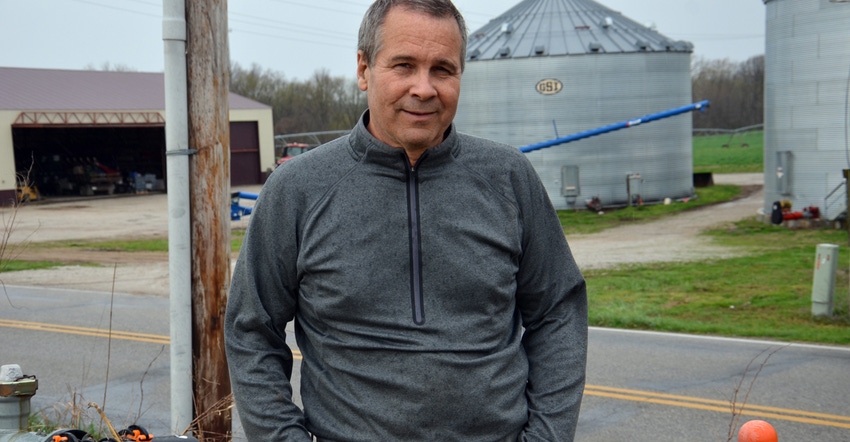
If you haven’t heard of Denny Bell, you may have heard of Soil-Max. The company builds tile plows and introduced Intellislope to make installation easier. Bell developed the company while farming and sold it to Ag Leader in 2012. He pattern-tiled all the land he owns that could benefit from drainage.
So this story is about how drainage has a healthy average return on investment of 20% or more, right? Wrong! It’s about how you can get similar ROIs on sandy soils by investing in irrigation. Specifically, it’s about going beyond center pivots to irrigate more acres.
“We also have a couple hundred acres of what I call ‘blow-sand,’” says Bell, Terre Haute. "We have an ample water supply, so we invested in center pivots wherever we could make them work.”
When the 2012 drought came along, it was an eye-opening revelation, he reports. “We went from around 200 bushels per acre [of corn] under irrigation that year to 3 bushels per acre in the corners.”
You read right — 3 bushels per acre! It didn’t take long for Bell to figure out that if he could irrigate those corners, he could net a healthy return on his investment. One field also had an odd area of several acres that the center pivot couldn’t reach.
New alternative
A company that began in Israel, Netafim, makes all types of drip-irrigation products for a variety of uses, including agriculture. After Bell pushed the pencil, he decided drip irrigation would be the best way to improve his odds of increasing profits on sandy soils that couldn’t be reached by more conventional irrigation methods.
“We already had the water available,” he notes. “We needed to install drip-irrigation tape in those areas.”
The drip tapes are typically installed 4 feet apart, sometimes 5, depending upon the soil, he says. They’re placed 15 to 18 inches deep.
“There is what they call an emitter spaced about every 18 inches,” he explains. “The system uses pressure to move water. When the pressure reaches 12 pounds per square inch, emitters open and let out water. When the pressure drops, they close so no material gets inside the tape.”
Every year isn’t 2012, but Bell is convinced he will still net an ROI similar to what he sees with drainage tile over time. He and his farm crew installed the drip tapes themselves, and Bell soon realized it was a labor-intensive job.
“We weren’t getting very far, so my daughters sent out an SOS on social media,” he recalls. “We had several good kids come help. In fact, one of them still works for us part-time today.”
The other big lesson boiled down to figuring out the right connectors to use, he says. The first connectors they tried didn’t fit well, and they leaked. Wherever there’s a leak, you dig it up and fix it, he says. Once they found a connector better-suited to their system, those problems became minimal.
There is a tool that helps with installation. Once you work out the kinks, the tape is not that difficult to install, Bell concludes.
About the Author(s)
You May Also Like




